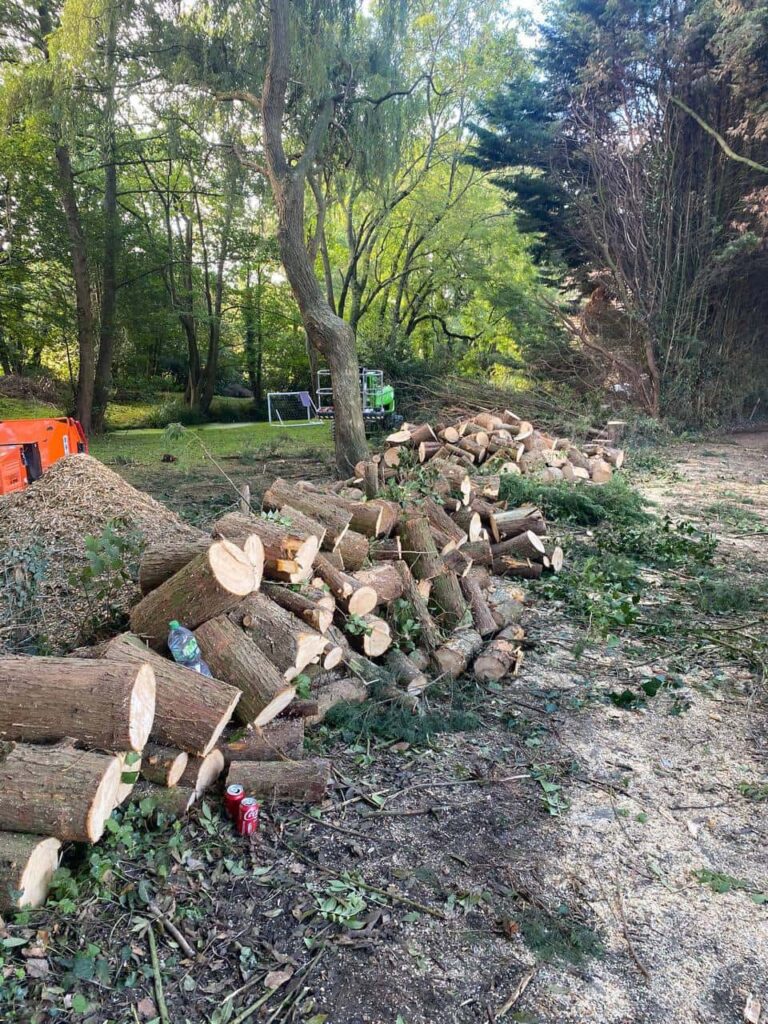Essential Preparations Before Starting Hedge Cutting
Introduction: Hedge cutting is an important aspect of garden maintenance, ensuring your hedges remain healthy, aesthetically pleasing, and well-maintained. However, proper preparation is key to achieving the best results and ensuring safety before diving into the task. At Downham Market Tree Surgeons, we understand that thorough preparation can make all the difference in the efficiency and effectiveness of your hedge cutting. In this blog post, we’ll outline essential preparations to consider before starting hedge cutting, helping you approach the task with confidence and ease.
1. Assess the Hedge and Surrounding Area
Before cutting, take some time to assess the hedge and its surroundings.
- Check the Hedge’s Condition: Inspect the hedge for any signs of disease, pest infestations, or damage. Addressing these issues before cutting can prevent further problems and ensure a healthier hedge.
- Examine the Surroundings: Look for obstacles around the hedge, such as fences, garden furniture, or power lines. Ensure there is enough space to manoeuvre your equipment safely.
2. Gather the Right Tools and Equipment
The right tools for the job are crucial for efficient and effective hedge cutting.
- Hedge Trimmers: Depending on the size and height of the hedge, choose between manual shears, electric hedge trimmers, or petrol-powered trimmers. Ensure your equipment is sharp and in good working condition.
- Safety Gear: Wear appropriate safety gear, including gloves, safety goggles, and sturdy footwear. If you’re working at height, use a safety harness and consider using scaffolding or a stable and securely positioned ladder.
- Other Tools: Depending on the size of the hedge, you might also need loppers, a rake for clearing debris, and a garden waste bag or bin for disposal.
3. Plan the Cutting Schedule
Timing is crucial for effective hedge cutting.
- Seasonal Timing: Understand the best times to cut your hedge. Late winter or early spring are ideal for most hedges, while summer is better for light trimming. To protect wildlife, avoid cutting during the nesting season (March to August).
- Weather Conditions: Plan to cut the hedge on a dry day. Wet or windy conditions can make the task more difficult and unsafe. Ensure the weather is suitable for working outdoors.
4. Prepare the Site
Creating a safe and organised workspace can improve your efficiency and safety.
- Clear the Area: Remove any debris, toys, or other items from the area around the hedge to create a clear working space. This helps prevent accidents and makes it easier to manage clippings.
- Set Up Safety Barriers: If the hedge is near pathways or driveways, consider setting up temporary barriers to keep people away from the area while you work. This ensures safety for both you and passers-by.
5. Inspect and Maintain Equipment
Properly maintained equipment is essential for a successful hedge-cutting job.
- Sharpen Blades: Ensure that all cutting blades are sharp. Dull blades can damage the hedge and make the job more difficult. Regular sharpening will also make your equipment last longer.
- Check for Wear and Tear: Inspect your equipment for any signs of wear or damage. Repair or replace faulty parts before starting work to avoid interruptions or safety issues.
6. Check for Wildlife and Nesting Birds
Protecting wildlife is an important consideration in hedge cutting.
- Inspect for Nests: Before you start, carefully check the hedge for any bird nests or other wildlife. In the UK, many bird species use hedges for nesting and disturbing these nests can have legal and environmental implications.
- Timing Considerations: To minimise disturbance to wildlife, avoid cutting during the nesting season. If nests are found, delay cutting until the young birds have fledged and the nesting season is over.
7. Plan for Waste Disposal
Proper disposal of hedge clippings is important for maintaining a clean and tidy garden.
- Organise Collection: Set up a system for collecting and disposing of clippings. Consider using a garden waste bin, composting the clippings, or arranging for a green waste collection service.
- Recycle Where Possible: Use hedge clippings as mulch or compost. This can provide valuable nutrients for your garden and reduce waste.
Conclusion: Preparing thoroughly before starting hedge cutting ensures a safer, more efficient, and effective process. By assessing the hedge and surrounding area, gathering the right tools, planning the cutting schedule, preparing the site, maintaining equipment, checking for wildlife, and organising waste disposal, you can achieve a well-maintained and attractive hedge with minimal hassle.
Call us on: 01366 310 686
Click here to find out more about Downham Market Tree Surgeons
Click here to complete our contact form and see how we can help you with your tree’s needs.

